Forty Years of Change in Adulthood Milestones Among 30-34 Year Olds
Family Profile No. 10, 2025
Authors: Wendy D. Manning and Krista K. Westrick-Payne
Key markers of adulthood include living independently, marriage, full time employment, completed education, and homeownership. Young adults are waiting longer to get married (FP-24-08) and often follow more complex pathways through young adulthood (Vespa, 2017), raising the question of whether these milestones are simply delayed or will be foregone. Using the American Community Survey at four 10-year intervals (1994, 2004, 2014, and 2024) this Family Profile examines the shares of young adults (ages 30-34) who have achieved a series of markers of adulthood.
Changes in Independent Living, 1994-2022
- Most 30-34 year olds did not live with their parents but there has been a small increase in the share who do. In 1994 10% of 30-34 year olds lived with parents whereas in 2024 14% did so.
- Most young adults who lived with their parents were residing in their parent’s home, but a small share (3%) had their parents living in their home.
Changes in Marriage, 1994-2022
- In 2024 approaching three out of five (57%) 30-34 year olds had ever been married.
- There has been a decline over the forty year period. In 1994 three-quarters (75%) of 30-34 year olds had ever been married.
Figure 1. Coresidence with Parents Among 30-34 Year Olds, 1994-2024
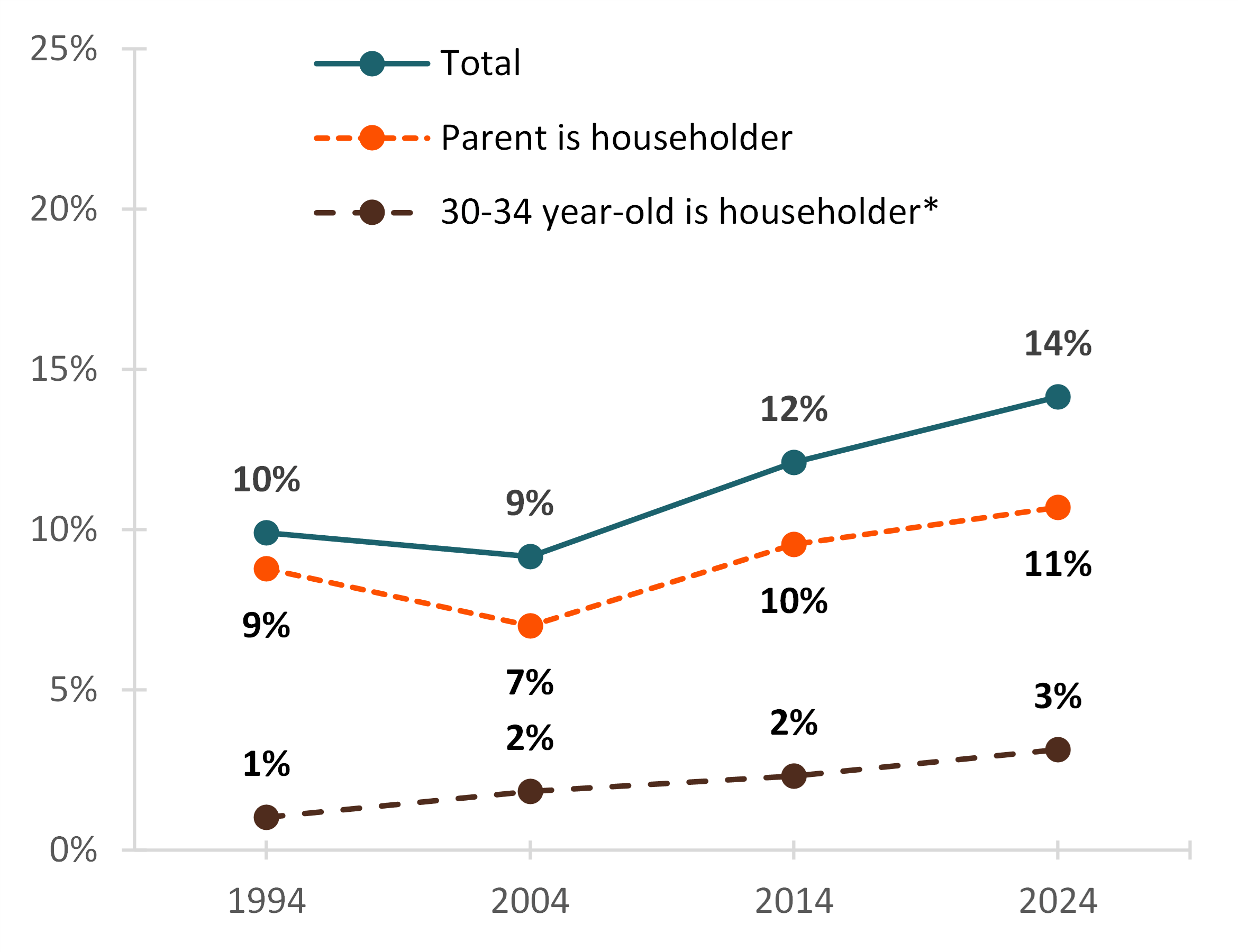
Figure 2. Ever Married Among 30-34 Year Olds, 1994-2024
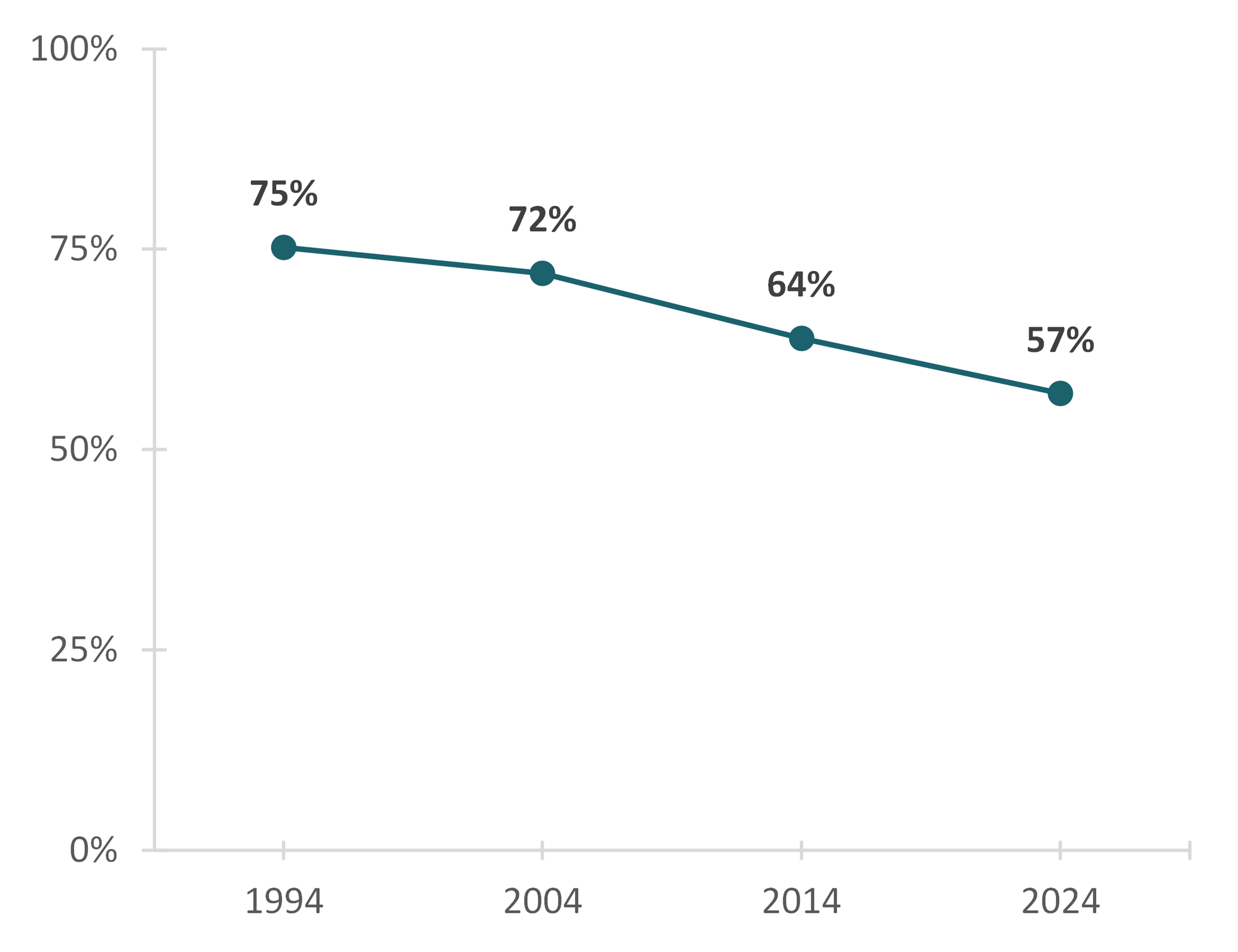
Source: NCFMR analyses of U.S. Census Bureau, Current Population Survey, ASEC, 1994, 2004, 2014, 2024, IPUMS CPS, University of Minnesota, www.ipums.org
Changes in Full-Time Employment, 1994-2022
- About three out of four (74%) of males ages 30-34 were employed full-time or in the armed forces in 2024 and there have been modest changes over time.
- The share of females working full-time has increased from 46% in 1994 to 55% in 2024.
- The sex gap in full-time work has narrowed.
Changes in Education Levels, 1994-2022
- Education levels for young adults have increased. In 1994 about one-quarter (24%) of 30-34 year olds had a college degree compared to 44% in 2024.
- The share of 30-34 year olds who had an associate’s degree or vocational certificate only slightly increased from 9% in 1994 to 11% in 2024.
Figure 3. Full-Time Employment among 30-34 Year olds by Sex, 1994-2024
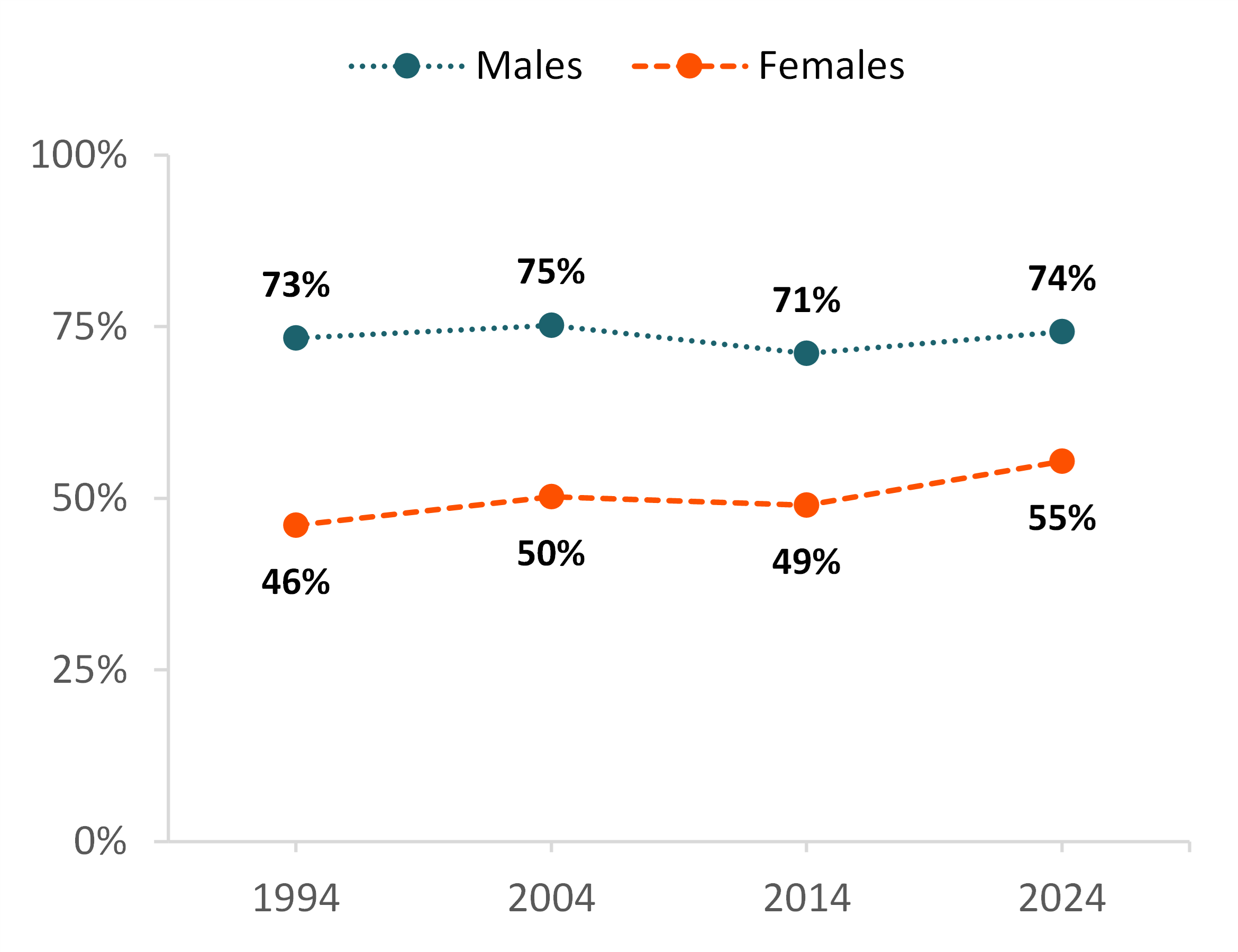
Figure 4. Education Levels among 30-34 Year olds, 1994-2024
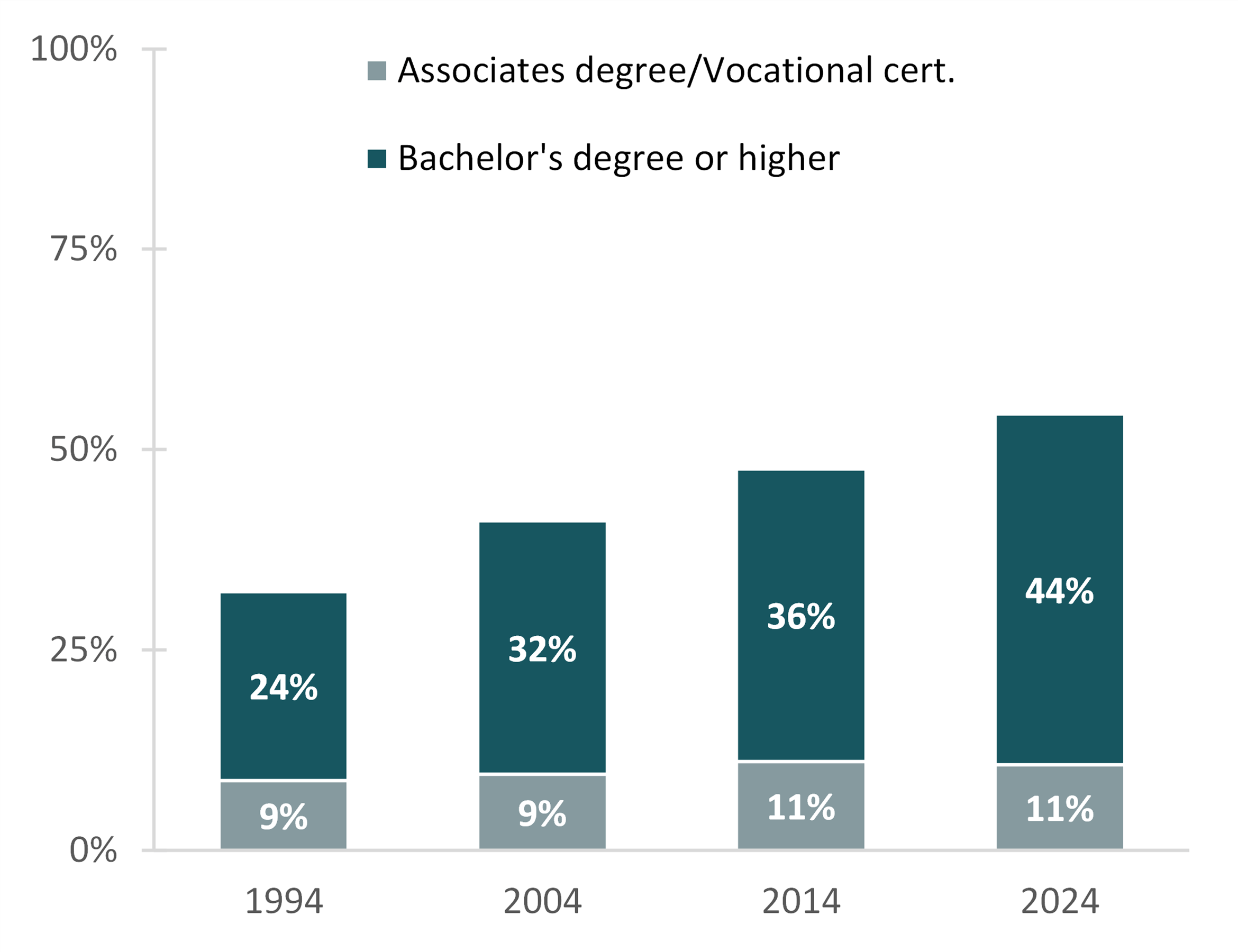
Source: NCFMR analyses of U.S. Census Bureau, Current Population Survey, ASEC, 1994, 2004, 2014, 2024, IPUMS CPS, University of Minnesota, www.ipums.org
Changes in Homeownership, 1994-2022
- About half (54%) of 30-34 year olds were homeowners in 2024, which was consistent with the share of homeowners a decade ago (53%).
- Homeownership among 30-34 years was highest in 2004 (62%).
Data Source:
Flood, S., King, M., Rodgers, R., Ruggles, S., Warren, J. R., Warren, D., Backman, D., Chen, A., Cooper, G., Richards, S., Schouweiler, M., & Westberry, M. (2024). IPUMS CPS: Version 12.0 [dataset]. Minneapolis, MN: IPUMS. https://doi.org/10.18128/D030.V12.0
References:
Vespa, J. (2017). The changing economics and demographics of young adulthood: 1975–2016. Current Population Reports, P20-579. Washington, DC: U.S. Census Bureau.
Westrick-Payne, K. K. (2024). Median age at first marriage: Geographic variation, 2022. Family Profiles, FP-24-08. Bowling Green, OH: National Center for Family & Marriage Research. https://doi.org/10.25035/ncfmr/fp-24-08
Figure 5. Homeownership among 30-34 Year Olds, 1994-2024
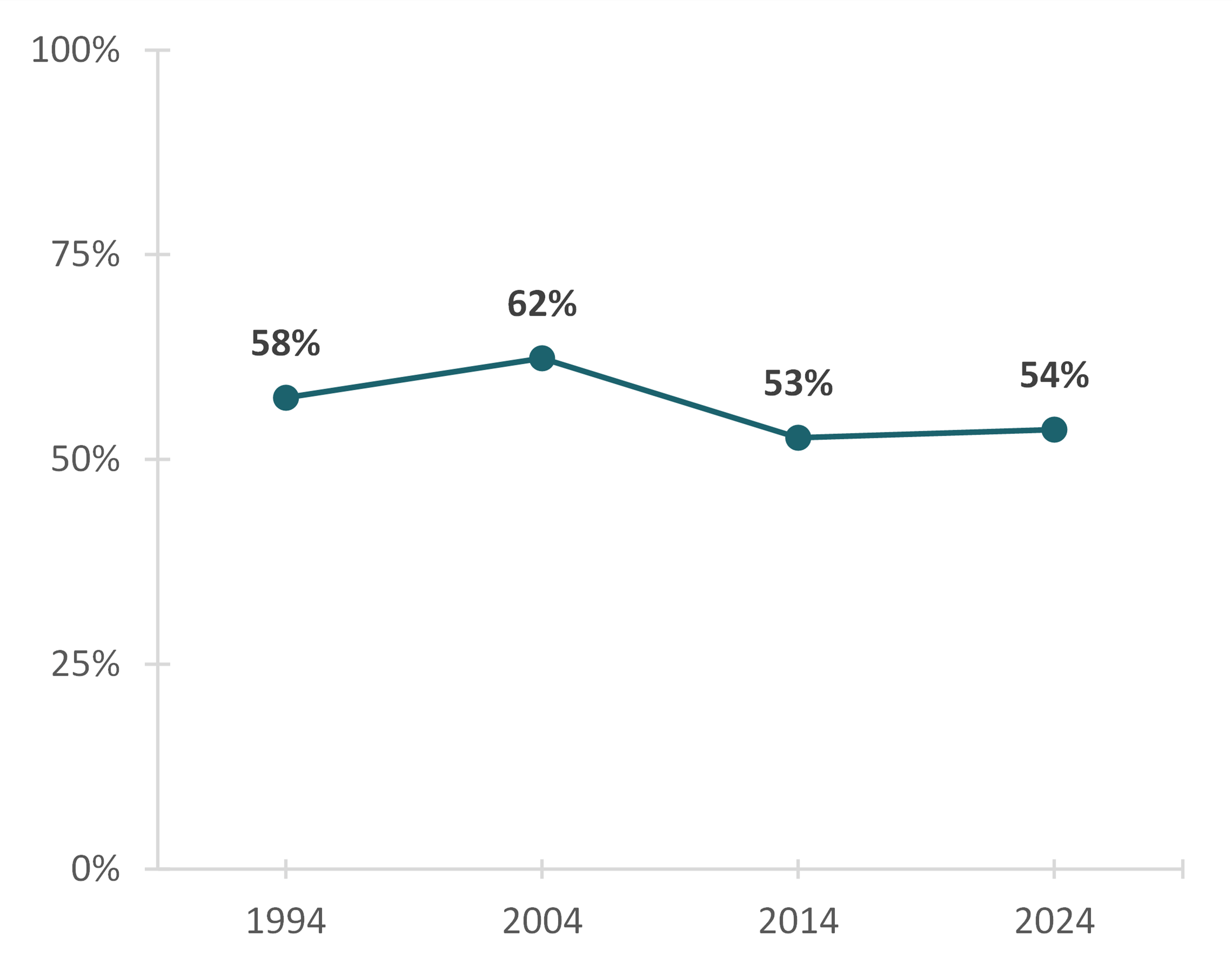
Source: NCFMR analyses of U.S. Census Bureau, Current Population Survey, ASEC, 1994, 2004, 2014, 2024, IPUMS CPS, University of Minnesota, www.ipums.org
Suggested Citation:
Manning, W. D., & Westrick-Payne, K. K. (2025). Forty years of change in adulthood markers among 30-34 year olds. Family Profiles, FP-25-10. Bowling Green, OH: National Center for Family & Marriage Research. https://doi.org/10.25035/ncfmr/fp-25-10
This project is supported with assistance from Bowling Green State University. From 2007 to 2013, support was also provided by the U.S. Department of Health and Human Services, Office of the Assistant Secretary for Planning and Evaluation. The opinions and conclusions expressed herein are solely those of the author(s) and should not be construed as representing the opinions or policy of any agency of the state or federal government.
Updated: 05/02/2025 12:17PM

